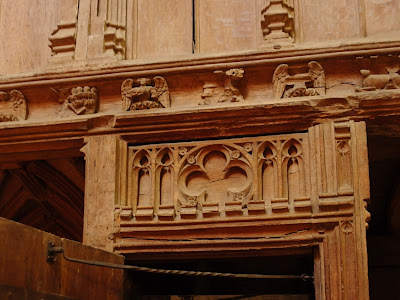The river at Cambridge is too narrow to allow boats to race side by side or overtake safely, so a different kind of race had to be devised.
The boats race in groups of seventeen and start at various points along the river with one-and-a-half boat lengths between each boat. The fastest crew from the previous race starts at the front with the second fastest behind them and so on down the line.
The idea then is to try to catch up with and bump the boat ahead. Once a bump is achieved the crews involved pull over to the side of the river to let the following crews past. As you will see in the video later, this does not always go as smoothly as it might!
Sometimes bumps occur within a few hundred yards of the start, while others chase the whole length of the course to no avail. For the next race the crews involved in a bump change places in the start order.
Successful crews decorate themselves with ivy - there being a lack of laurel leaves along the river bank.
So here's a video which I hope captures some of the excitement, exuberance and exertion of the event. There are four races featured - two Women's races and two Men's. Hold tight!
A quiet afternoon on the river - not.
Take care.





















































